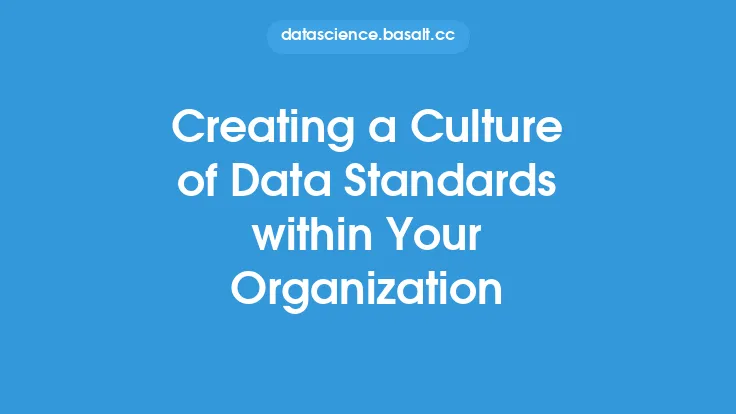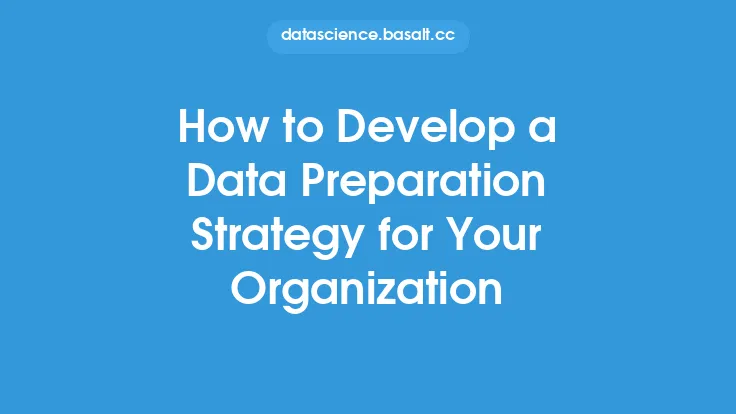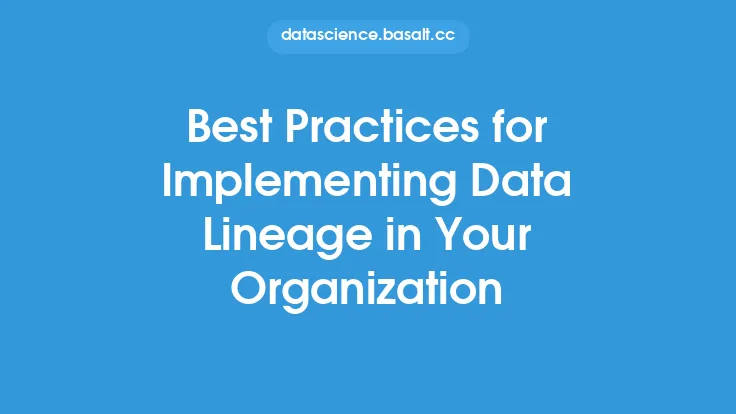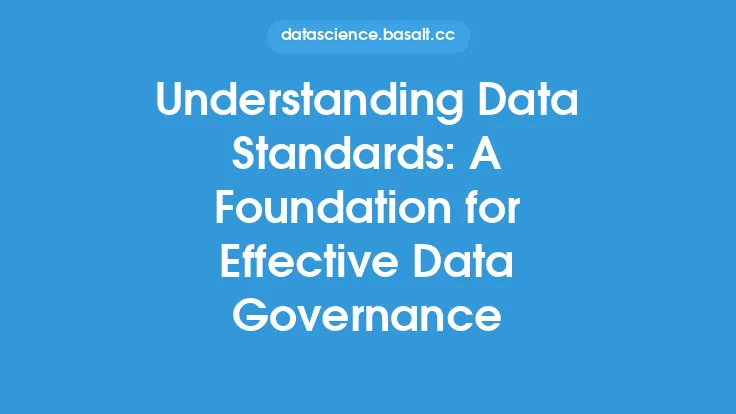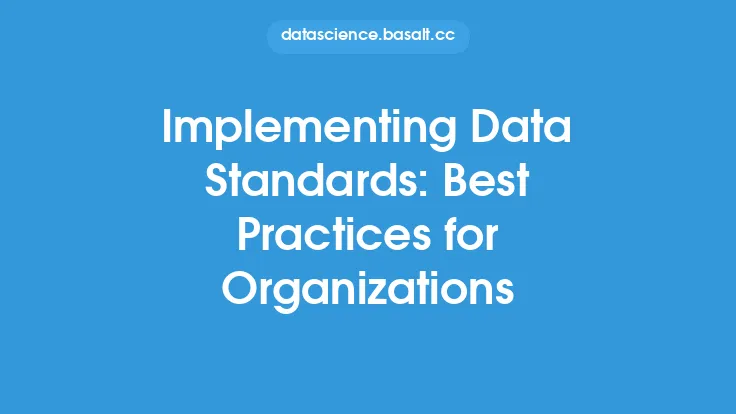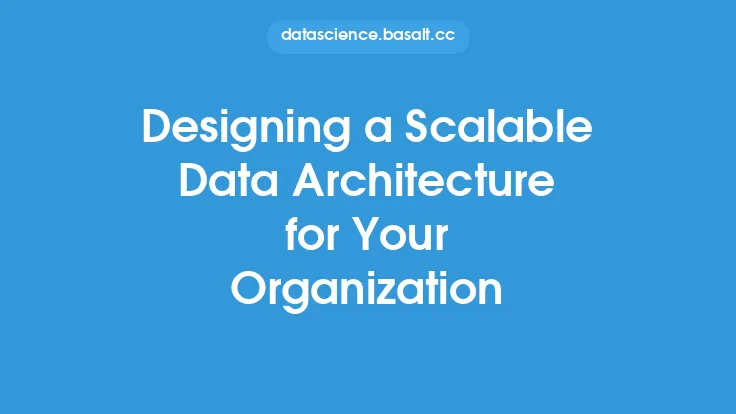Developing a robust data standards framework is a critical component of effective data governance. A well-designed framework provides a structured approach to managing data, ensuring that it is accurate, consistent, and reliable. This, in turn, enables organizations to make informed decisions, optimize operations, and drive business growth. In this article, we will delve into the key components of a data standards framework, the benefits of implementing one, and the steps involved in developing a tailored framework for your organization.
Introduction to Data Standards Frameworks
A data standards framework is a set of guidelines, policies, and procedures that define how data is collected, stored, processed, and shared within an organization. It provides a common language and set of rules for data management, ensuring that data is consistent, accurate, and reliable. A data standards framework typically includes components such as data governance policies, data quality standards, data architecture, and metadata management. By implementing a data standards framework, organizations can ensure that their data is trustworthy, secure, and compliant with regulatory requirements.
Key Components of a Data Standards Framework
A comprehensive data standards framework consists of several key components, including:
- Data governance policies: These policies define the roles and responsibilities of data stakeholders, data ownership, and data management processes.
- Data quality standards: These standards define the criteria for data accuracy, completeness, and consistency.
- Data architecture: This component defines the overall structure and organization of an organization's data assets, including data models, data warehouses, and data lakes.
- Metadata management: This component defines the processes and standards for managing metadata, including data definitions, data lineage, and data provenance.
- Data security and access controls: These controls ensure that data is protected from unauthorized access, use, or disclosure.
- Data retention and disposal policies: These policies define the guidelines for data retention, archiving, and disposal.
Benefits of Implementing a Data Standards Framework
Implementing a data standards framework offers numerous benefits, including:
- Improved data quality: A data standards framework ensures that data is accurate, complete, and consistent, which is critical for informed decision-making.
- Increased data integrity: A framework helps to prevent data errors, inconsistencies, and redundancies, ensuring that data is reliable and trustworthy.
- Enhanced data security: A framework provides a structured approach to data security, ensuring that data is protected from unauthorized access, use, or disclosure.
- Better compliance: A framework helps organizations to comply with regulatory requirements, such as data privacy and protection laws.
- Improved data sharing and collaboration: A framework provides a common language and set of rules for data management, enabling seamless data sharing and collaboration across departments and teams.
Steps to Develop a Data Standards Framework
Developing a data standards framework involves several steps, including:
- Conducting a data governance assessment: This assessment helps to identify the current state of data management within the organization, including data assets, data processes, and data stakeholders.
- Defining data governance policies: These policies define the roles and responsibilities of data stakeholders, data ownership, and data management processes.
- Establishing data quality standards: These standards define the criteria for data accuracy, completeness, and consistency.
- Designing data architecture: This component defines the overall structure and organization of an organization's data assets, including data models, data warehouses, and data lakes.
- Implementing metadata management: This component defines the processes and standards for managing metadata, including data definitions, data lineage, and data provenance.
- Developing data security and access controls: These controls ensure that data is protected from unauthorized access, use, or disclosure.
- Establishing data retention and disposal policies: These policies define the guidelines for data retention, archiving, and disposal.
Technical Considerations
When developing a data standards framework, several technical considerations must be taken into account, including:
- Data modeling: This involves creating a conceptual representation of an organization's data assets, including entities, attributes, and relationships.
- Data warehousing: This involves designing and implementing a centralized repository for storing and managing data.
- Data lakes: This involves designing and implementing a decentralized repository for storing and managing raw, unprocessed data.
- Metadata management tools: These tools help to manage metadata, including data definitions, data lineage, and data provenance.
- Data quality tools: These tools help to ensure data accuracy, completeness, and consistency.
- Data security tools: These tools help to protect data from unauthorized access, use, or disclosure.
Implementation and Maintenance
Implementing a data standards framework requires a structured approach, including:
- Developing a project plan: This plan outlines the scope, timeline, and resources required for implementation.
- Establishing a data governance team: This team is responsible for overseeing the implementation and maintenance of the framework.
- Providing training and awareness: This helps to ensure that data stakeholders understand the framework and their roles and responsibilities.
- Monitoring and reporting: This involves tracking and reporting on framework compliance, data quality, and data security.
- Continuously reviewing and updating: This involves regularly reviewing and updating the framework to ensure that it remains relevant and effective.
Conclusion
Developing a data standards framework is a critical component of effective data governance. A well-designed framework provides a structured approach to managing data, ensuring that it is accurate, consistent, and reliable. By implementing a data standards framework, organizations can improve data quality, increase data integrity, enhance data security, and better comply with regulatory requirements. By following the steps outlined in this article, organizations can develop a tailored framework that meets their unique needs and requirements.
